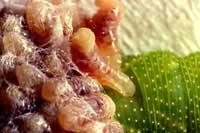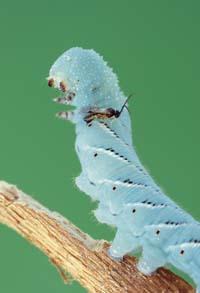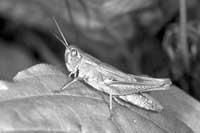Accounts of plants
2012/05/01 Etxebeste Aduriz, Egoitz - Elhuyar Zientzia Iturria: Elhuyar aldizkaria
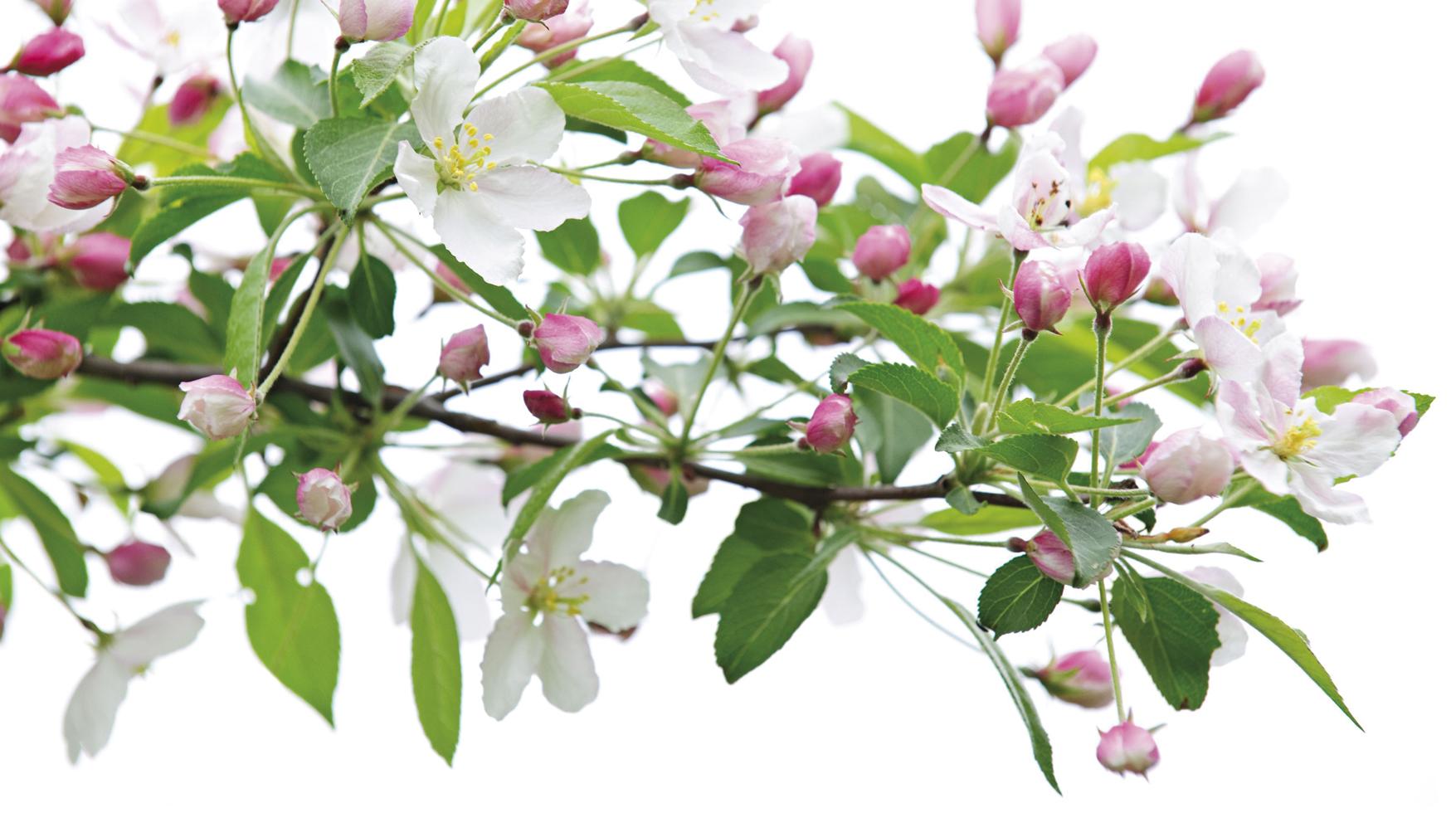
The apple tree is not any communicator. In early spring it communicates the pollinating insects with white flowers that open almost ahead of the leaves, finding there a sweet nectar. And the apple tree will get the insects to transport the pollen from the flower to the flower. At the end of summer, through the sweet smell of ripe apples, opens another important message, a direct call to the fruit trees to eat the fruit and spread the seeds.
But there does not end the communicative skills of an apple tree. For example, the apple tree is also able to call the enemies of its enemies. When attacked by an mite, the apple tree emits volatile compounds and sends a chemical message to call the "bodyguards" circulating around. This message attracts other mites that eat mites that attack the apple tree.
Isolated studies that suggested that the plants had this type of communicative capacities, provoked great debates until a few years ago. However, in recent years, scientists have been discovering more and more examples. Marcel Dicke of the University of Wagening (Holland) was one of the first to discover communication between apple trees and mites. At present, he is convinced that this type of communication systems are very common in plants: "I am convinced that all plants do so. We have never found plants that do not send chemical messages."
Consuelo De Moraes, from Pennsylvania State University, is also a pioneer in researching interactions between plants and insects. De Morales investigated the case of some herbs that attack the tobacco plant, corn, etc. and Dick discovered that the same thing he had seen between the apple tree and the mites occurred. When the caterpillar begins to eat the plant, some components of its saliva cause the plant to emit some volatile compounds. These compounds attract parasitic wasps that put an egg inside the caterpillar. The wasp larva that is born of this egg is fed with fear.
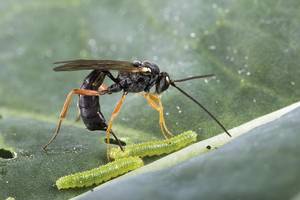
According to De Morales, not all experts agree on whether this is a true communication: "It has been discussed whether the compounds emitted by a plant before an aggression are really a sign or simply by-products of physiological processes. I think they have a function of signal and that this form of communication is quite important for plants".
Request for help
The plants have direct defense mechanisms against the vegetative insects, which produce toxic compounds for them. But "defend with toxins is not effective against all enemies. And to fight specialists with the ability to resist toxins, the help of bodyguards is important," says Dick.

"Interactions with volatile compounds are increasingly complex and complex between plants and insects. More than we think," says De Morales. For example, in the case of parasitic caterpillars and wasps, they have seen that plants do not send messages at any time. Compounds that attract parasitic wasps are only poured during the day, as wasps act during the day. In the evening, tobacco plants attacked by caterpillars emit other compounds. These compounds scare the nocturnal moths and prevent the laying of eggs, thus avoiding that of these eggs more herbaceous than would eat the plant are born.
But not only that, the team of De Moraes has seen that the plants also detect who is the aggressor and according to that they send a message or another, specifically, a message addressed to the enemy of this aggressor.
On the other hand, the aggressors also use the messages of the plants to know each other. The herbaceous researchers found that an insect that feeds on the roots of mustard and another that lays eggs on the leaves of the same plant are known thanks to the messages sent by the plant. That is, if an insect incites in the subsoil, the one that lays eggs in the leaves (so that their caterpillars are chosen with the leaves) can know that this plant is taken and thus avoid competing for the same resource.
It is becoming increasingly clear, therefore, that the language formed by the volatile messages of plants is more complex than expected, and what was at the limit of an incredible decade attracts more and more researchers' attention. "Now there are many studies that are being carried out on the mechanisms used by plants to synthesize these volatile compounds," explains De Moranes. There is a key substance: jasmine acid. It is a plant hormone that, when the plant suffers some attack, sets in motion the defense mechanisms of the plant. According to a recent study by the group of De Moranes, vegetable lice know very well. They remove the jasmine acid from the plant, preventing the plant from attracting predators from the lice and turning the defense mechanism of the plant upside down. Furthermore, if the caterpillars reach a plant attacked by lice, they are also free from predators.

From the plant to the plant
The communication of plants is not limited to interactions with insects. "There is more and more evidence that the affected neighbors receive messages fired by the nearby plants and that they then launch their defense mechanisms," adds De Morales. The Americans Jack Schultz and Ian Baldwin published in Science in 1983 what was seen in maple trees and herons: by damaging the leaves of some specimens, the harmless specimens of the area also launched their chemical defenses. Thus, they proposed the hypothesis of communication between the plants. At that time, however, the concept of “ponent tree” was not accepted.
For many years no more was discussed on the subject, but from the 90's more evidence was discovered. In 2000 Baldwin himself showed that this phenomenon was also produced among different species of plants. Let's see with horror that the wild tobacco plants of the area of Nicotiana attenuata, influenced by a compound detached by the damaged Artemisia tridentata shrub, produced more toxic compounds and so did with tremors and grasshoppers 50% less.
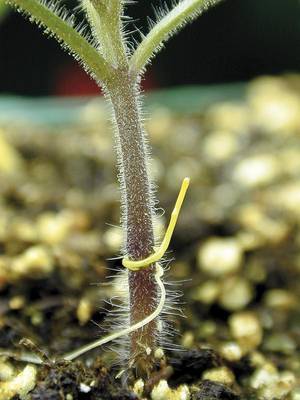
And it is that if plants are able to send messages, it is no wonder that they are able to receive them. "More and more studies show that plants have sophisticated olfactory capacities," explains De Morales. This capacity can provide advantages but also risks. "We have recently discovered that some parasitic plants that feed on other plants use smell to grow towards the host." The Cuscuta pentagon speaks of a parasitic plant. Cuscuta lives from the sweat of other plants and in 2006 they showed that Cuscuta, to locate the victims, "ole" the volatile compounds that they emit to the air.
Underground messages
"Other research has begun to explore underground communication," adds De Moranes. For example, as with the Cuscuta, the compounds that throw corn, sorghum and millet into the soil attract the parasitic plant Striga.

And through this secret underground communication, the capacity of the plants to know their relatives has been discovered in different studies. Researchers at the McMaster University of Ontario, in a work published in 2007, explained that the Cakile edentula grains of the same mother, planted together in the same boat, develop less their roots than the specimens of different mothers. And in another work of 2010 the result was the same with Arabidopsis thaliana. In this case, the plants were bred in individual containers, and subsequently transferred. The plants placed on the boat in which there was a previous relative developed less their roots. And, after repeating the experiment with a compound that inhibits root secretion, there were no similar differences in root development. This showed the importance of compounds detached from their roots in the process of knowledge of their relatives.
Artemisia tridentata goes beyond the bush, uniting the ability to meet their relatives and the defense mechanisms. The researchers have found that the messages that segregate the affected specimens have greater influence on relatives than on the non-related ones. In fact, those who received messages from their relatives suffered fewer attacks.
Surprises happen, but little by little the researchers learn to listen to the plants. According to De Moranes, "understanding the messages used by plants to implement their defense mechanisms can help apply them in agriculture." Precisely that is one of the current objectives of the Dicke team: "use the communication of plants to protect crops without harming the environment". For example, "asking for help to cry loudly we can choose varieties that collaborate with biological control agents," says Dick.

Gai honi buruzko eduki gehiago
Elhuyarrek garatutako teknologia




